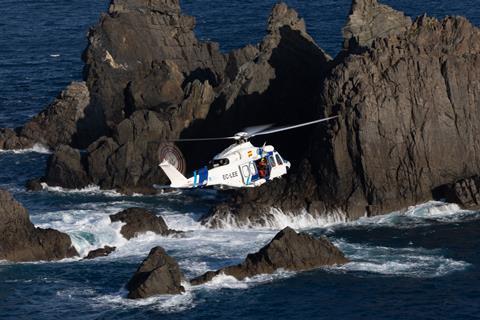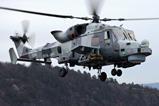Emergency services provider Avincis is charting an aggressive growth path, targeting global expansion where “nothing is off the table”.
In addition, the Portugal-headquartered company is pursuing the commercialisation of “game-changing” technologies created by its research and development unit.

Best known as a helicopter operator offering emergency medical or search and rescue (SAR) services in Europe, Avincis also has a strong fixed-wing interest, operating a large fleet of firefighting aircraft.
And while its history can be traced back decades, the latest iteration only arrived on the scene in 2023, when private equity firm Ancala acquired the business from previous owner Babcock and revived the Avincis name.
Since then the firm has been “almost flying under the radar for a bit” while restructuring has taken place, says chief commercial officer Simon Tye.
But with that completed and a “different culture” in place, Avincis is ready to grow again.
“Now we are at a point where we are looking at expansion in our existing product lines – HEMS, firefighting, SAR… but as an aviation company nothing is off the table,” says Tye.
To support that effort, Avincis has set up a global division – in parallel with its existing Iberia, Italy and Nordics business units – “primarily with the remit to go and expand around the world”. Eastern and Central Europe and Africa are all regions of interest, he says.
The growth plan also includes a minor foray into the oil and gas segment, flying offshore support missions in Mozambique, Italy and Spain.
“It’s a skill-set we have within the business,” says Tye, a helicopter pilot with stints as a SAR captain under his belt. However, the firm insists it has no plans to go head to head with the sector’s incumbents – the likes of Bristow Group and CHC Helicopters.
Prior to its acquisition by Babcock, the old Avincis had built a strong presence in the North Sea on the back of its purchase of Bond Helicopters.
That unit was sold off separately by Babcock – eventually ending up as Offshore Helicopter Services.
Since its carve out, Avincis has trimmed its fleet, largely rationalising it around the Airbus Helicopters H135 and H145 light-twins and larger Leonardo Helicopters AW169 and AW139.
Tye says bigger super-medium-class rotorcraft such as the H175 or AW189 will also be considered “but the contract and commercial terms would have to be right before we’d actively jump”.

Fleet outliers include a large inventory of Bell 412s and Airbus AS332 L2s for firefighting and a H225 on contract to Spanish national maritime safety body SASEMAR for long-range SAR missions.
Meanwhile, a pair of De Havilland Canada CL-215 water-bombers are based in Portugal, while it also operates 19 Italian government-owned CL-415s on behalf of the country’s Vigili del Fuoco agency.
In addition, Avincis has a “substantial” R&D organisation based in Galicia in northwest Spain, which it is “now taking to commercialisation”, says Tye.
Technologies developed by the unit relate to firefighting – “understand the track of fires and the impact of water drops” – and casualty location for SAR operations.
Patents have either been granted or applied for to protect what Tye calls the “game-changing” technologies, which have been tested in real-world scenarios.
“We have three to four years of data based on the innovations we have created,” he adds.

Drones developed by the unit have also been successfully trialled on the SASEMAR contract, deployed from the agency’s ships; roll-out of the technology will take place over the next two years.
“It’s a great bit of technology that is going to substantially increase the capabilities of SASEMAR,” Tye says.
The creation of a new training operation is also core to Avincis’s plans, “to bring on young graduates or school leavers”, not least to ensure access to a pipeline of new talent and address a looming industry-wide staffing shortage.
“We are trying to tackle that by setting up our own training systems,” he says.
A first step will see the establishment of a school in Italy to teach flying in mountainous terrain. While no details of the proposed location have been revealed, Tye says planning is “fairly advanced”.
Ultimately the training operation could offer places to third-party customers but will first require investment to scale it up.
“The business case is being built up for just how large we make the training establishment within Avincis,” he adds.































